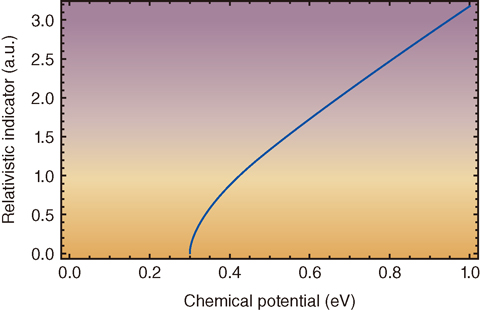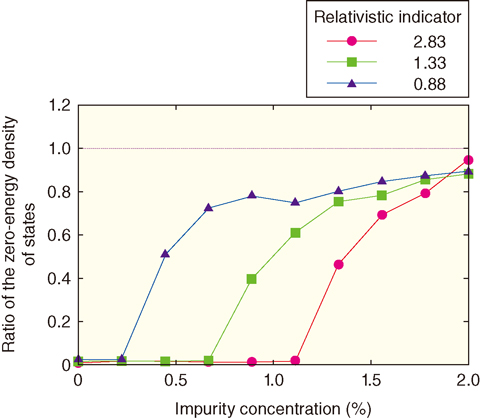
Fig.10-3 Chemical-potential dependence of the “relativistic” parameter (see the main text) in superconductor CuxBi2Se3

Fig.10-4 Impurity amount dependence on the ratio of the zero-energy density of states in superconducting state to that of the normal one in the superconductor
In the materials called superconductors, electrical resistance vanishes at low temperature. So far, potential applications of the superconductors have been intensively studied in nuclear R&D fields. In fact, superconducting coils will be indispensable for nuclear fusion reactors. The superconductors can also produce autonomous devices working in ultimate environment like space.
Recently, so-called topological superconductors have attracted much attention, since entirely new types of devices become possible when using topological superconductors. However, the topological superconductors have been usually regarded to be very fragile against impurities. In other words, with increasing impurity concentration, the superconducting transition temperature decreases, and then any device application does not work. Therefore, we investigated how robust a candidate of topological superconductors, CuxBi2Se3 against impurities. As a result, we theoretically found that a “relativistic” parameter determines the impurity robustness. This “relativistic” parameter comes from the fact that the equation of motion for electrons in CuxBi2Se3 is equivalent to that for relativistic particles. As the speed of electron increases, the superconductivity becomes more robust against impurities. By shifting the chemical potential proportional to Cu-doping, one can adjust the relativistic parameter (Fig.10-3).
In order to confirm this theoretical scenario, we numerically simulated the superconductivity with finite impurity concentration. Then, we developed the code which can solve the equation of motion for electrons in realistic materials on a supercomputer. Consequently, we obtained the result that a superconductor with a large “relativistic” parameter is robust against impurities and that one can control the impurity robustness by Cu-doping (Fig.10-4). Thus, we could show that these kinds of topological superconductors become useful by tuning the “relativistic” parameter.
This study was supported by Japan Society for the Promotion of Science (JSPS) KAKENHI Grant-in-Aid for Young Scientists (B) (No.26800197).